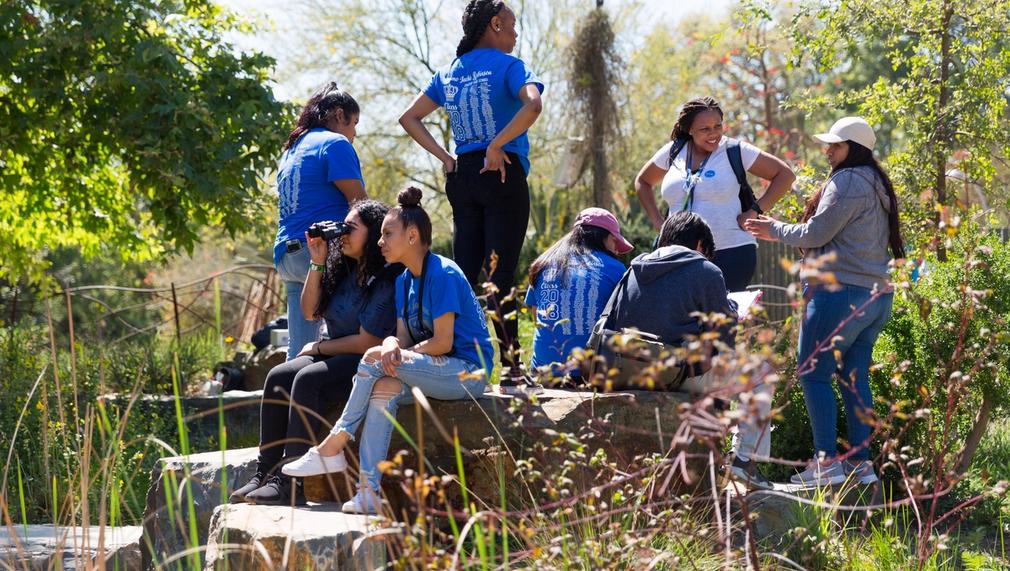Explore Wild L.A. with NHMLAC
The Natural History Museums of Los Angeles County (NHMLAC) seeks to ensure that future generations of scientists and environmental activists better reflect the diversity of L.A. by providing youth and families in our Community Partner program with access to transformative, nature-based day trips, camp-outs, and internship opportunities. With support from LA2050, NHMLAC will be able to expand this programming to include a cohort of local foster and systems-impacted youth, likely to be drawn from the County’s Department of Youth Development.

What is the primary issue area that your application will impact?
Support for Foster and Systems-Impacted Youth
In which areas of Los Angeles will you be directly working?
County of Los Angeles
In what stage of innovation is this project, program, or initiative?
Pilot or new project, program, or initiative
What is your understanding of the issue that you are seeking to address?
People of color are severely under-represented in environmental science-based careers. Foster and systems-impacted youth face even steeper challenges. Being part of a severely disadvantaged neighborhood, where the median household income is 73% less than the CA statewide median household (2017 Census) and with the lowest per-capita acreage of parks and natural areas in the city, NHMLAC is committed to addressing these systemic inequities. In 2018, we began building a Community Partner program centered on providing a safe and welcoming space at our museums where the diverse youth and families involved with local CBOs could visit free of charge and co-create authentic programming that reflected their own interests and perspectives. Current Community Partners include Expo Center, Black Girls Trekkin’, Korean Family Services, Courage Camps, Extraordinary Families, Fernandeno Tataviam Band of Mission Indians, Proyecto Pastoral, InnerCityStruggle, and A Place Called Home, among many others.
Describe the project, program, or initiative this grant will support to address the issue.
This grant will help NHMLAC provide numerous opportunities for hands-on experiences that bring science and nature to life, and offer a stepping stone to fulfilling careers in the environmental sciences and other STEM-related fields. Beginning in fall 2022 and continuing throughout the year, NHMLAC will lead a series of six day-long excursions enabling 40 or so participants each time to experience nature hikes, learn the fundamentals of making nature observations, and contribute their observations as critical data points in our scientist’s research projects. Twice a year, 75 participants will also take part in camp outs, both in our Nature Gardens at the Natural History Museum and at a state park further afield, led by the museum’s renowned scientists and researchers and a group of educators dedicated solely to this program. These and other activities will prepare youth for paid summer internship opportunities offered by NHMLAC that will lay the groundwork for future academic and career advancement. Participation in this programming will be open to NHMLAC’s large network of Community Partners, many of whom lack access to parks and natural environments and are largely first-time campers–to ask questions, get engaged, and become confident in nature. A dedicated Program Manager, made possible with the support of LA2050, can expand this opportunity to enable local foster and systems-impacted youth to participate and receive the highest level of support and care.
Describe how Los Angeles County will be different if your work is successful.
NHMLAC seeks to ensure that all Angelenos have equitable access to nature, and through this grant program, can fulfill a uniquely important role in ensuring that foster and systems-impacted youth have access to enriching cultural and recreational experiences that result in a heightened sense of awareness, agency, leadership ability, and empowerment about future career options. If we are successful: 1) future generations of scientists and museum professionals in Los Angeles will better reflect the ethnic diversity, age, income, and systems-impacted populations of our region; (2) a growing pipeline of environmental activists will commit to preserving our region's extraordinary biological diversity; and 3) significant numbers of systems-impacted and BIPOC youth from traditionally underserved communities will gain access to a transformative array of natural and cultural resources.
What evidence do you have that this project, program, or initiative is or will be successful, and how will you define and measure success?
Having direct contact with the museum’s scientists, educators, collections managers, and curators will afford our youth participants a first-hand look at many different fields, awakening minds to new career paths. NHMLAC will use a number of assessment tools to determine learning outcomes and program effectiveness. In general, we track metrics related to the following four broad categories: 1) program reach; 2) implementation and participation level; 3) outcomes and understanding achieved; and 4) quality of engagement. We will be tracking the program over the course of several years to determine whether the program had an impact on participants’ future academic choices and career pathways.
Approximately how many people will be impacted by this project, program, or initiative?
Direct Impact: 40
Indirect Impact: 390